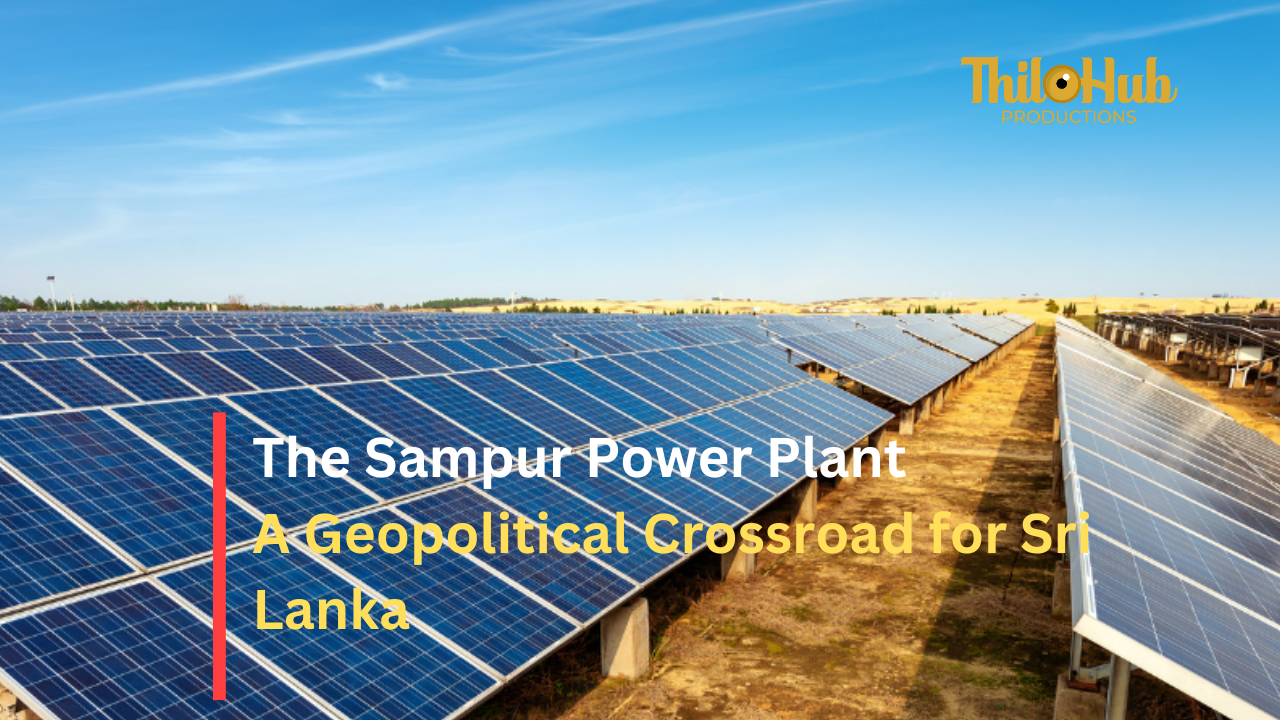In recent years, Sri Lanka has found itself at a pivotal crossroads, balancing its energy needs with the complex web of international relations. One such case that has stirred political debates and regional implications is the Sampur Power Plant, a critical coal-fired energy project that has become a symbol of the intricate geopolitics of South Asia.
At its core, the Sampur Power Plant represents Sri Lanka’s ambition to meet its growing energy demands. With a population of over 21 million people and an ever-expanding economy, the country’s need for reliable and affordable electricity has never been more pressing. The plant, located in the eastern province of Trincomalee, is poised to provide a significant chunk of the nation’s electricity supply, ensuring that the energy sector can keep pace with the economic progress Sri Lanka envisions for itself.
However, while this project promises to address energy security, it is far from without controversy. The very nature of the Sampur Power Plant, being a coal-based facility, has raised alarms among environmentalists and local communities. Critics argue that the plant will contribute to pollution and environmental degradation in an already fragile ecosystem. In addition, the displacement of local communities and the disruption of traditional livelihoods have fueled protests and legal challenges, which have given rise to political divisions within Sri Lanka.
What makes the Sampur Power Plant even more intriguing is the role played by India in its development. Through its state-owned company NTPC, India has invested in the project, with the promise of not only supplying much-needed energy but also enhancing economic ties between the two nations. For India, the power plant is part of a broader strategic initiative to solidify its influence in Sri Lanka and, more importantly, in the Indian Ocean region.
This involvement, however, does not come without political implications. For Sri Lanka, India’s participation in such a vital project brings both opportunities and challenges. On one hand, the financial and technical expertise provided by India could help accelerate Sri Lanka’s energy transition. On the other, it raises concerns over the growing footprint of a regional superpower on Sri Lanka’s soil. There are fears, particularly among certain political factions, that Sri Lanka could become too reliant on India for critical infrastructure projects, potentially undermining its sovereignty and independence in key sectors.
The proximity of the Sampur plant to the strategically important Trincomalee Harbor—an area that has been of interest to both India and China—adds another layer of complexity to the situation. Sri Lanka has, in recent years, cultivated ties with China, attracting significant investments in infrastructure projects, including the controversial Hambantota Port. This has created a delicate balance for Sri Lanka, which must navigate between India’s security concerns and China’s growing economic presence. In this context, the Sampur Power Plant becomes not only a source of power but a geopolitical chess piece.
While India’s involvement in the Sampur Power Plant is framed as a cooperative effort to enhance Sri Lanka’s energy sector, it inevitably plays into the broader regional power struggle. The reality is that Sri Lanka must tread carefully, ensuring that its development aspirations do not become the collateral damage of geopolitical rivalry between India and China.
In conclusion, the Sampur Power Plant is more than just an energy project—it is a microcosm of Sri Lanka’s broader political, economic, and strategic challenges. As the country strives to secure its energy future, it must also carefully consider the political and diplomatic ramifications of its international partnerships. In doing so, Sri Lanka will need to find a path that maximizes the benefits of foreign involvement while safeguarding its autonomy and national interests.
The Sampur Power Plant serves as a reminder that in today’s interconnected world, every energy project has far-reaching implications, not only for the people it serves but for the complex web of global politics in which it is embedded.

